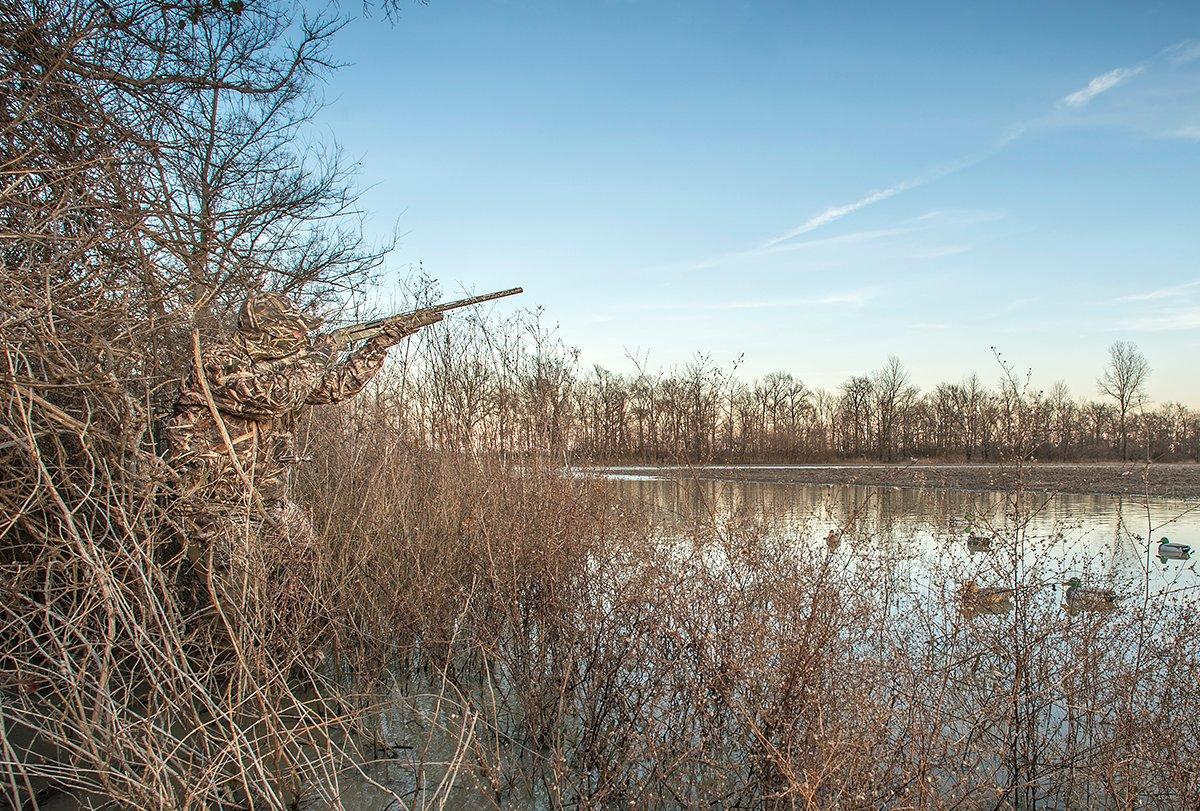Calculate All You Want, But Success Comes From Practice and Instinct
When I was 12, my dad sat me at the kitchen table, placed a piece of paper in front of me and, using mathematics, tried to illustrate how far I'd need to lead a flying duck to kill it.
Being 12 and hating math, I pretty much zoned out and began daydreaming. However, probably to Dad's surprise, I retained the gist of that lesson: Dad wasn't suggesting that I memorize and practice leads for targets at various distances. He was trying to pound through my Neanderthal-esque skull that when wing-shooting, you must shoot where the bird will be, not where it is.
That remains great advice, but applying it can get tricky. One day, you swing hard on a streaking wood duck and fire just as your shotgun's bead comes even with the bird's beak, sending the woodie cartwheeling down. Another day, you might take a long, lazy lead on a high goose — seemingly standing still — and drop the honker like a bag of bricks. Many days, either previously successful sight picture results in a three-shot whiff, leaving you shaking your head. Misses, of course, make you question your approach and wonder which shotgunning method works best.
That's tough to answer honestly, as everyone shoots differently. Some folks are snap-shooters. Others advocate the swing-through method, in which you start behind the target, swing through the bird and slap the trigger when your brain says go. A few use the calculated sustained-lead method, in which they start ahead of the bird, try to match its speed and touch the trigger when the distance seems correct. And honestly, many folks use a combination of those approaches depending on the day and shot.
I'm squarely in the combination camp, though I never consciously choose one approach over another. Some days, the mental sight pictures come so easily and naturally that my shotgun seems to find the correct distance in front of a duck and fire itself. Other days, the pictures look completely different but remain effective. And now and then, nothing works.
So when folks ask me how to shoot better — and that doesn't happen often, trust me — my advice is pretty rudimentary. First, rewind your shooting to the pre-season, and then practice a lot. Shoot whenever possible, whether it's trap, skeet, sporting clays, barnyard pigeons or hand-thrown clay targets. And then shoot some more. Practice sessions let you think about technique and try various approaches. Set your feet correctly; about shoulder width, with your left foot (assuming you shoot right-handed) pointed where you want to break the bird. Place more weight — up to 75 percent — on that foot. Practice pre-mounting and mounting your gun. First, do it with your eyes closed, and then check to see that your dominant eye is lined up perfectly down the rib and with the bead. Then, do it with your eyes open, keeping your vision firmly locked on a target, not the bead. And shoulder your gun the right way. The stock should first touch your cheek and then slide to your shoulder, not vice versa. Learn to shoot with both eyes open. It might seem weird at first, but it truly helps you pick up the bird sooner and get on it instinctively. And be a stickler about moving your gun smoothly and following through. Practice to the point that it becomes instinctual. Oh, and always start your gun under the target so you can see the bird well.
That's sound, albeit basic, advice. How about shooting in the field? Simpler yet. Don't think; react. Rely on the skills and form you've acquired through practice. Locate the target, let your brain tell you when you should fire, and then keep your eyes locked on that target as you rise, mount your gun, swing instinctively ahead of the bird and shoot. Do not look at the rib or bead. Do not hesitate and wonder if your lead is correct. You want to be a creature of habit and reaction, not thought; aggressive, not hesitant. If doubt creeps into your mind as you shoot, err on the side of getting farther ahead of the target. Very few folks shoot ahead of ducks unless the birds abruptly change course.
Through time, experience and solid repetition, your hand-eye coordination will transform you into a duck-shooting machine. You'll never be perfect, but ala Lombardi, as you strive for perfection, you might achieve excellence.
If that seems like a gross oversimplification of wing-shooting technique, you're correct, and that's intentional. Everything you need to become a sho-nuff duck killer is within your hands, eyes and brain. Shoot a lot to let your onboard computer reveal what works, and after a while, it will become habit.
Now, I must run and practice shouldering my gun. I missed a cake shot on a mallard last week, and I still can't figure out what I did wrong. Like I said — simple, right?
Click here for more Realtree waterfowl hunting content. And check us out on Facebook.







